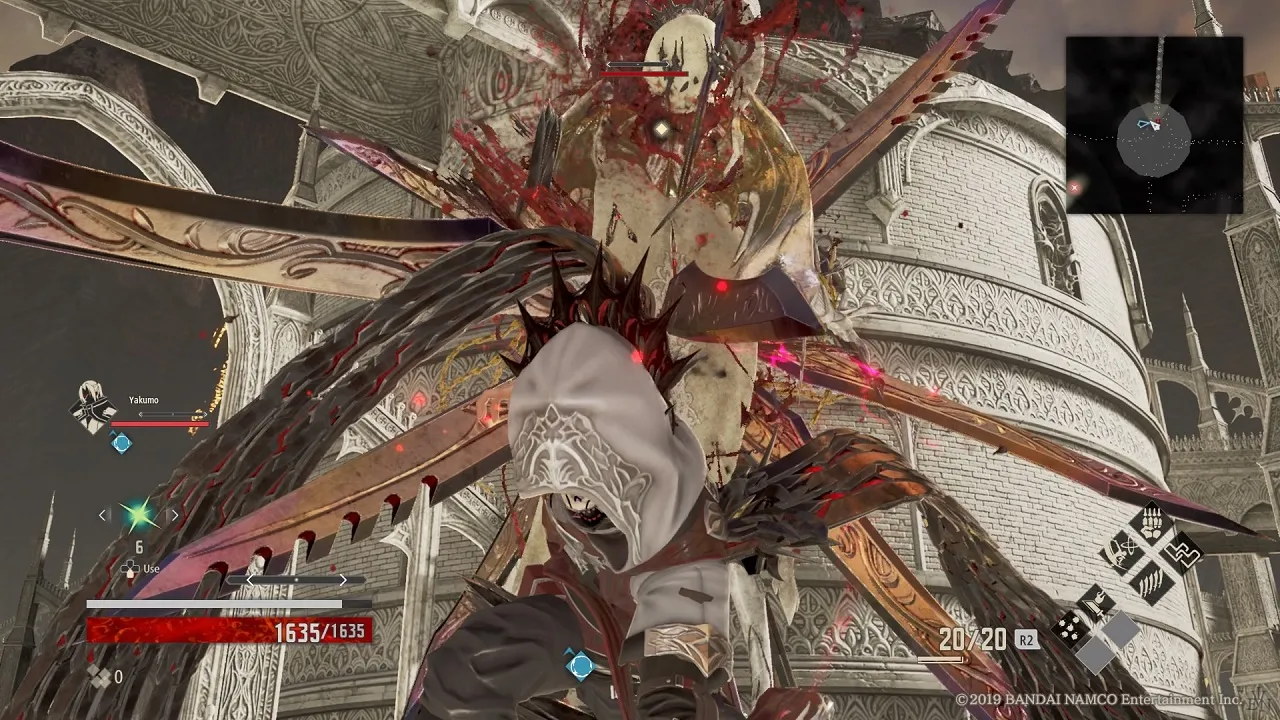
Code Vein Review: A Stylish Anime Souls-like with Flaws
Contents
The Souls-like genre, born from the challenging depths of Demon’s Souls in 2009, has captivated gamers with its demanding combat and intricate worlds. Bandai Namco’s Code Vein, released in 2019, attempts to carve its own niche within this popular genre, infusing it with a distinct anime aesthetic. But does it succeed in capturing the essence of a Souls-like while forging its own identity?
A World on the Brink: Vein’s Desperate Struggle
Code Vein thrusts players into a ravaged world teetering on the edge of collapse. You are a Revenant, resurrected from death with the gift of immortality, but cursed with a thirst for human blood. Without this vital sustenance, you risk transforming into a Lost, a mindless creature driven by primal hunger.
Trapped within Vein, a city isolated by a crimson mist, Revenants struggle for survival, vying for Blood Beads, a substitute for human blood. Factions rise and fall, the strong preying on the weak in a desperate battle for existence.
You are drawn into this brutal reality, but your journey takes a turn when you encounter Louis, a Revenant who clings to his humanity. Together with his group, you embark on a quest to discover the source of the Bloodspring, a mysterious tree that produces Blood Beads, hoping to end Vein’s suffering.
 Code Vein
Code Vein
True to its “anime Dark Souls” inspiration, Code Vein unfolds like a lengthy anime series. The narrative, while somewhat predictable, remains engaging enough to propel you forward. Unraveling the mysteries of Vein and the Revenants’ origins becomes increasingly compelling, thanks to the game’s well-crafted world and interconnected characters and events. Fans of God Eater will also appreciate the subtle connections between the two titles.
The characters, though often archetypal, fulfill their roles effectively, with distinct personalities and motivations. Discovering their Vestiges and piecing together their memories reveals the personal struggles each character faces amidst the chaos, adding a layer of human depth to these lost “vampires.”
Customization and Combat: A Double-Edged Sword
 Code Vein
Code Vein
Beyond the intriguing storyline, Code Vein offers extensive character customization. From hairstyles and clothing to facial features, the options are plentiful, allowing you to create a truly unique Revenant. This is easily one of the most time-consuming and rewarding aspects of the game.
The Blood Code system further enhances customization, allowing you to tailor your playstyle. Blood Codes essentially function as character builds, dictating stats and Gifts (skills). Each Blood Code has its strengths and weaknesses. For example, Prometheus favors one-handed swords and swift dodges but has low health, while Atlas boasts powerful two-handed weapon attacks and high health but suffers from slow movement.
As you defeat enemies using a specific Blood Code, you gain proficiency in its Gifts, eventually allowing you to use them regardless of your equipped Blood Code. This system allows for a vast array of builds, encouraging experimentation and strategic combinations.
 Code Vein
Code Vein
With numerous Blood Codes scattered throughout the world, including some unlockable through New Game+, the customization possibilities are nearly endless, promising hundreds of hours of gameplay.
Room for Improvement: Addressing the Shortcomings
 Code Vein
Code Vein
Despite its strengths, Code Vein has several shortcomings that detract from the overall experience. The detailed character animations, while visually appealing, become a hindrance in combat. Drain Attacks and Parries (executed using Blood Veils) are slow and inconsistent, with certain Blood Veil types like Stinger and Ivy noticeably slower than others. While Drain Attacks are designed to restore Ichor (mana), their slow execution and vulnerability make them less effective than standard attacks, which also restore Ichor.
 Code Vein
Code Vein
Cooperative skills suffer from similar issues, with long animations and high Ichor costs for minimal impact. While intended for boss battles, their lengthy execution leaves you vulnerable to attacks. This feels counterintuitive, considering Code Vein‘s generally faster pace compared to other Souls-like titles. Consequently, focusing on dodging and attacking, like in a traditional Souls game, feels more effective.
Level design is another weakness. While expansive, the maps lack the engaging exploration of Dark Souls or Bloodborne. Navigating often feels tedious, particularly in areas like the Cathedral of the Sacred Blood, where repetitive environments and numerous obstacles force tedious backtracking. This area also bears a striking resemblance to Anor Londo from Dark Souls 3.
Finally, Code Vein is surprisingly easy. The fast-paced combat and powerful companions make traversal and boss fights manageable. To compensate, the game introduces the “Lost Invasion” mechanic, which spawns waves of enemies in specific areas. This mechanic, however, activates randomly and without warning, often overwhelming players with hordes of stronger-than-usual enemies wielding debilitating status effects.
Conclusion: A Stylish but Flawed Experience
Code Vein successfully blends anime aesthetics with Souls-like gameplay, offering a unique experience. However, its flawed combat mechanics, underwhelming level design, and questionable difficulty scaling prevent it from reaching its full potential. Despite these shortcomings, Code Vein remains an enjoyable title, especially for fans of anime and Souls-like games. With some refinement, a sequel could address these issues and deliver a truly exceptional experience.





Comments (0)